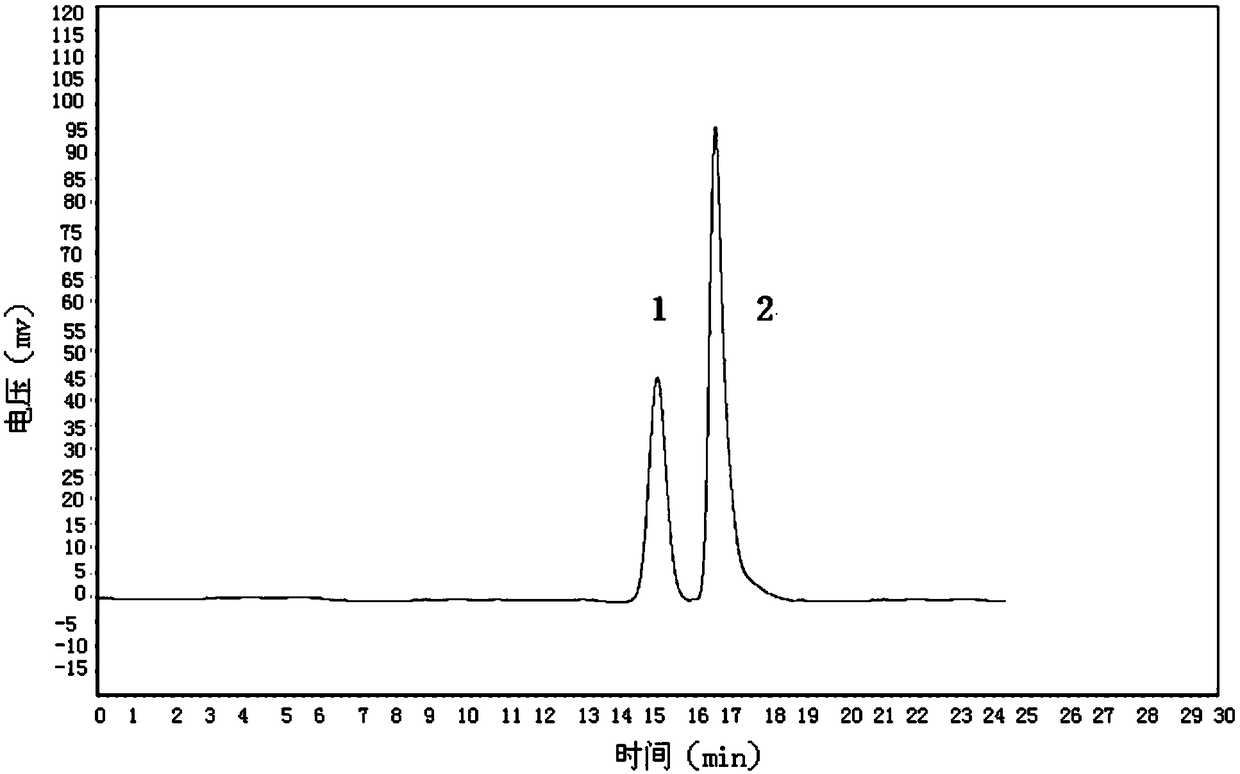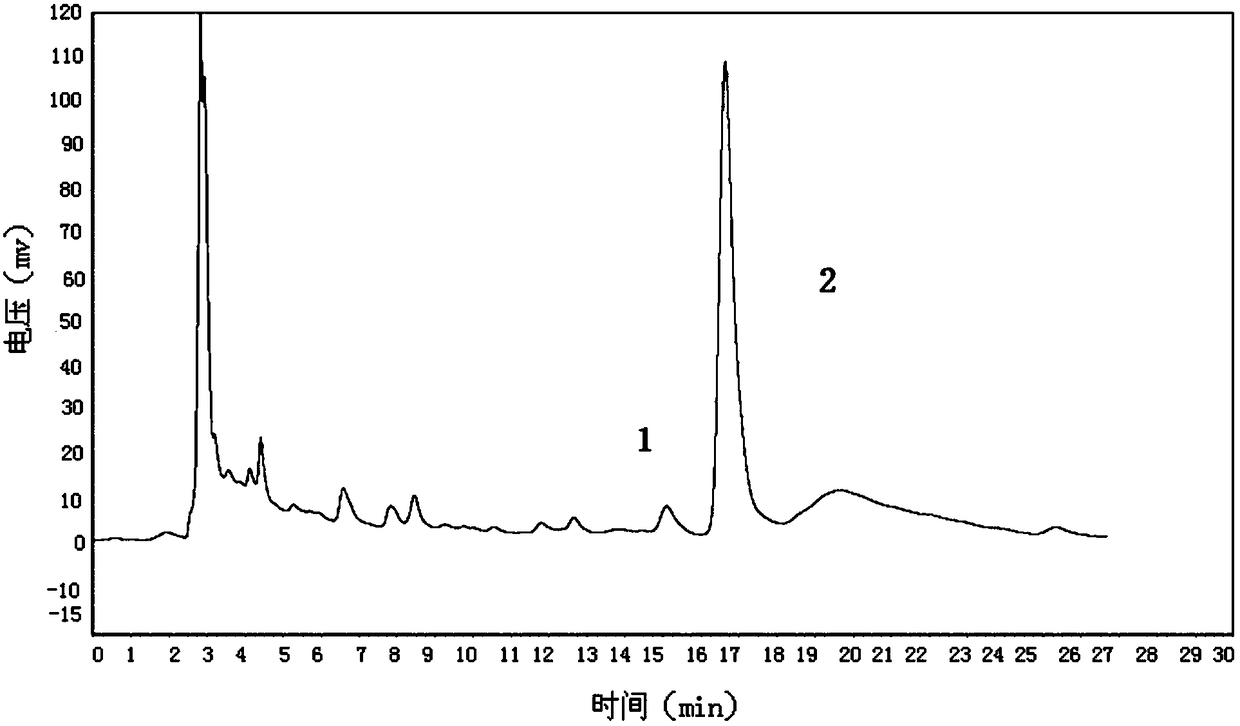Preparation method of compound nanoparticles for reducing aflatoxin absorption and liver damage
A technology of aflatoxin and absorbability, applied in the field of preparation of compound nanoparticles, can solve the problem of reducing the bioavailability of aflatoxin
- Summary
- Abstract
- Description
- Claims
- Application Information
AI Technical Summary
Problems solved by technology
Method used
Image
Examples
Embodiment 1
[0068] Embodiment 1, a kind of preparation method of the compound nanoparticle that reduces intestinal absorption of aflatoxin and liver injury, carries out the following steps successively:
[0069] 1), accurately weigh 12g of catechins and proanthocyanidins mixed in equal amounts (that is, the mass ratio of catechins and proanthocyanidins is 1:1), add 200mL of sodium polyphosphate solution with a mass concentration of 1.5%, well mixed;
[0070] 2), add water to 1000ml in 5g of chitosan, in 5000mL round bottom flask, after magnetic stirring (speed 1000r / min), adjust pH 4.0, obtain chitosan liquid;
[0071] 3), the solution prepared in step 1) (that is, the sodium polyphosphate solution of catechins and proanthocyanidins) was uniformly and slowly added dropwise to the round bottom flask in 2), and the addition was completed in 70 minutes (ie , the dropping rate is about 50 drops / minute);
[0072]The obtained reaction system was continuously stirred at 25° C. for 60 minutes (...
Embodiment 2
[0073] Embodiment 2, a kind of preparation method of the compound nanoparticle that reduces intestinal absorption of aflatoxin and liver damage:
[0074] Change the mass ratio of catechins and proanthocyanidins in step 1) from 1:1 to 1:3; the total weight remains unchanged, still 12g;
[0075] Change the consumption of chitosan into 2g by 5g in step 2);
[0076] The rest are equal to Example 1.
Embodiment 3
[0077] Embodiment 3, a kind of preparation method of the compound nanoparticle that reduces intestinal absorption of aflatoxin and liver damage:
[0078] Change the mass ratio of catechins and proanthocyanidins in step 1) from 1:1 to 3:1; the total weight remains unchanged, still 12g;
[0079] Change the consumption of chitosan in step 2) into 1.5g by 5g;
[0080] The rest are equal to Example 1.
[0081] Experiment 1. Detection of encapsulation efficiency of nanoparticles:
[0082] The compound nanoparticle suspension of embodiment 1, embodiment 2, embodiment 3 gained is detected according to the above method, and the results are as follows:
[0083] The encapsulation efficiency (%) of the compound nanoparticle suspension obtained in Example 1=75.57%;
[0084] The encapsulation efficiency (%)=53.84% of the compound nanoparticle suspension obtained in embodiment 2;
[0085] The encapsulation efficiency (%) of the compound nanoparticle suspension obtained in Example 3=41.94...
PUM
| Property | Measurement | Unit |
|---|---|---|
| recovery rate | aaaaa | aaaaa |
| recovery rate | aaaaa | aaaaa |
Abstract
Description
Claims
Application Information
 Login to View More
Login to View More - R&D
- Intellectual Property
- Life Sciences
- Materials
- Tech Scout
- Unparalleled Data Quality
- Higher Quality Content
- 60% Fewer Hallucinations
Browse by: Latest US Patents, China's latest patents, Technical Efficacy Thesaurus, Application Domain, Technology Topic, Popular Technical Reports.
© 2025 PatSnap. All rights reserved.Legal|Privacy policy|Modern Slavery Act Transparency Statement|Sitemap|About US| Contact US: help@patsnap.com



